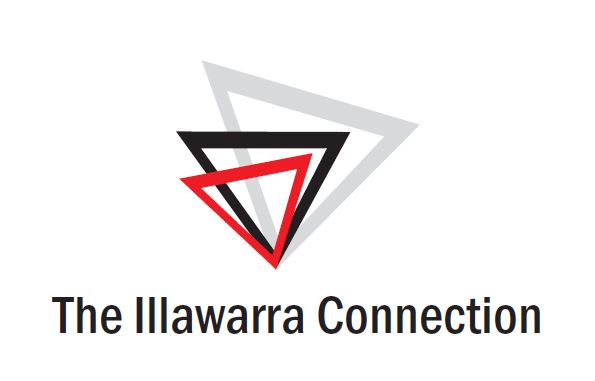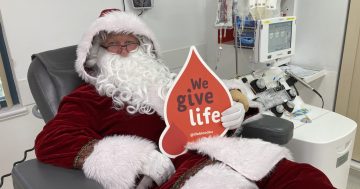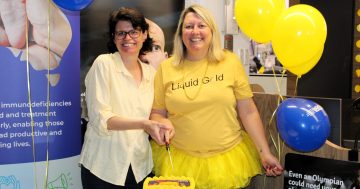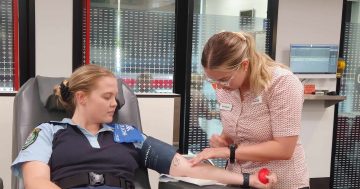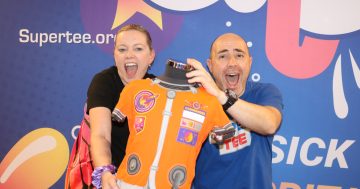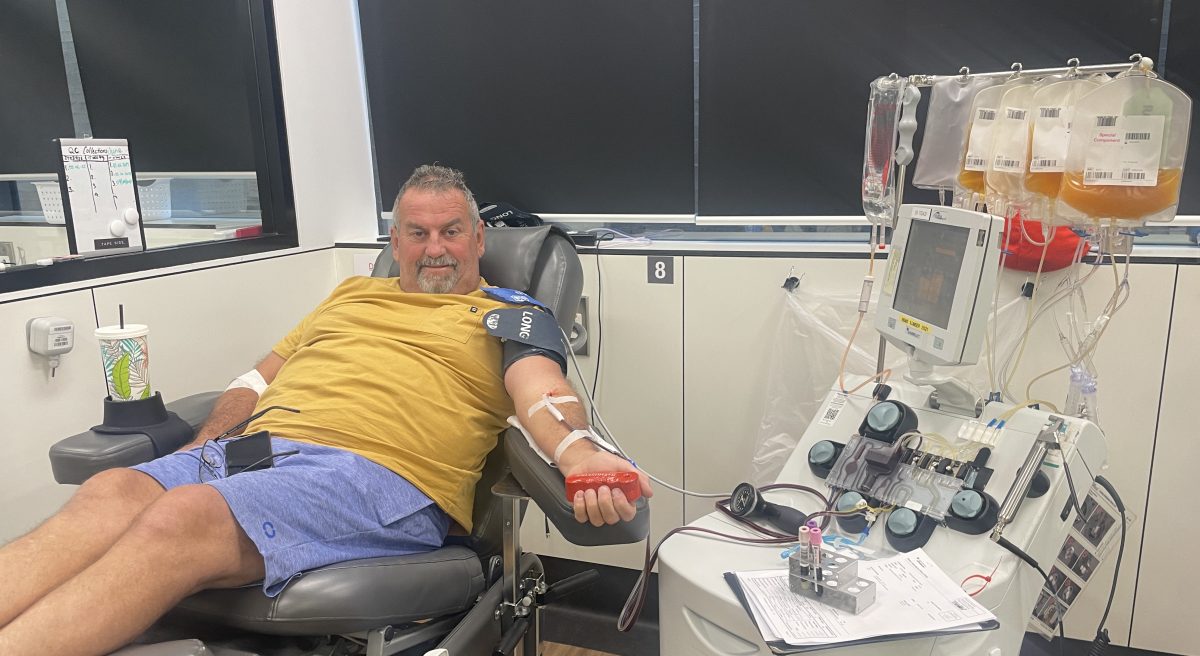
Trevor Bates donating lifesaving platelets at Wollongong Blood Donor Centre. Photo: Keeli Royle.
The first eight times Trevor Bates donated blood, it couldn’t be used and was thrown away, but now the 58-year-old’s donations have proved vitally important for helping save the lives of newborn babies and others in need.
Trevor made his first trip to the blood bank more than two decades ago when he was diagnosed with hemochromatosis, a disorder where the body builds up too much iron, which can eventually lead to tissue and organ damage.
“I had to give blood to get my iron down and then after they got it down to a manageable level, I started donating on a regular basis,” Trevor said.
The grandfather from Dapto went from donating full blood to donating plasma and then platelets, which is when he discovered just how special his blood was.
“I’m matched so it goes straight to a patient,” Trevor said. “I’ve also got a rare gene for newborn babies which helps their immune systems.”
In addition to Lifeblood’s normal criteria to donate blood, there are extra measures for platelet donors. Only men are able to donate, due to the risk of a rare but serious condition called transfusion-related acute lung injury, which is believed to be caused by antibodies more commonly found in women’s blood.
And although some platelets can be retrieved through whole blood donation, more can be collected through a process called apheresis, where the platelets are removed by a machine and other blood components are returned to the donor.
The process is similar to plasma donation, but takes a little longer.
“It’s an hour and half to two-hour donation,” Trevor said.
Two to three doses of platelets can be collected from each of these donations, but it becomes a race against the clock, as they can only be used for up to a week after collection and by the time they are dispatched to the hospital there will only be a day or so for the platelets to be transfused.
And while Trevor is able to give platelets every fortnight, due to the time-sensitivity and importance of his donation, he waits until he is contacted by the special component team.
“I can do it every two weeks, but they like me to do it when they need me,” Trevor said. “They just ring me and say we need it on this date and this date.”
Trevor said he has now donated platelets around 80 times, with most of those matched directly to patients.
“It’s pretty awesome,” he said. “It’s incredible to know that just sitting here, in 24 hours it will be in a patient and hopefully helping them.”
In Australia, there are around half a million people who donate blood, but last year there were only about 7600 who donated platelets through the apheresis process.
Of those active apheresis donors, 2600 made their first platelet donation that same year.
The platelet donations can be lifesaving for people with leukemia going through treatments like chemotherapy and for helping prevent bleeding during surgeries after major trauma.
But the demand for blood products is not just limited to platelets, so even if you are not eligible, there are other ways to donate and help the one in three Australians who will need blood in their lifetime.
To find out more visit the Lifeblood website, or call your local donation centre.




